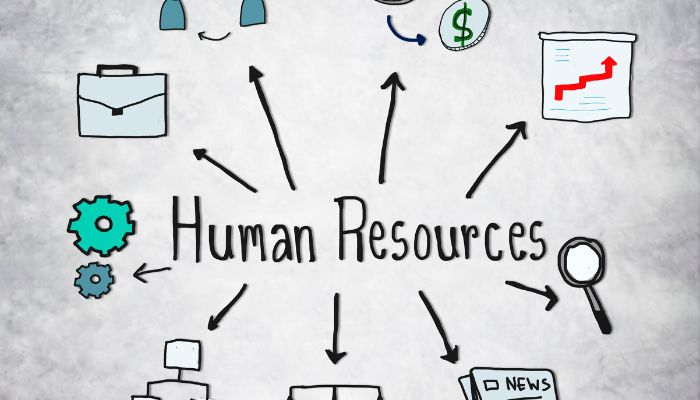Change is constant in the business world, which is rapidly evolving at a quicker stride than it was a decade ago. With the rise of digital transformation, gig economy, and incorporation of AI technologies in the last few years, it has become imperative for organizations to adapt and transform to keep up with the pace. However, these changes cannot be implemented overnight or within a few months. It requires planning, team efforts, employee support, and keenness to adapt and transform. Hence, change management.
What is change management?
Change management is a systematic approach that an organization adopts to implement new changes within its external and internal administrations. The approach involves— briefing employees, understanding their needs, implementing steps for changes, monitoring these steps post-implementation, and making necessary revisions in favor of the employees for the plan to succeed.
This approach introduces an effective communication plan within the organization to incorporate new strategies, ideas, and processes while minimizing negative outcomes. This may sound easier than it seems, but managing the people side of the change management can be challenging and critical. Small-scale businesses still have the leverage to communicate new strategies and processes through their small-scale staff effectively, but to successfully lead change management in a big-scale organization or enterprise can be tricky. Also, the HRs are the driving force to make change management a success in the organization.
Playing a crucial role in leading change management and encouraging employees to embrace and adapt to new changes, the baton of success or failure unquestionably lies in the hands of human resources. Owing to their efficacious communication skills, organizations and leaders rely on HRs to lead change management to success. The reason being, even the most lucrative plan and strategy can bite the dust if the communication is poor. Moreover, employees are the most valuable assets of the organization, and initially, they may resist these changes given they’ll have to alter their working pattern by incorporating new changes in their day-to-day routine. However, an agile HR team can lead change management programs successfully if they have an effective communication plan.
Now, although communication implementation strategies may differ from company to company. Here are some critical steps that the human resources must bear in mind while drafting a communication plan and managing the employees during the transformation:
Maintain transparency with employees: An organization that values its employees will keep them informed about all the happenings, successes, and failures. So, when it comes to spearheading a wave of change through the system, the HRs must keep their employees in the loop. They must maintain transparency and inform them why these changes are imperative and how they will be lucrative for them and the organization. And, to make the communication crystal clear to the people, HRs must connect the organization’s goals and objectives with these changes to help the employees understand the urgency and need for these changes in the system.
Keep the CEO, executives, and team leaders connected: Implementation is the next-to-last step of the process. The first being— drafting a lucrative strategy and a well-thought-out communication plan. Sit down with the board members, shareholders, CEO, and executives. Learn and understand the potential changes they would want to implement to help the organization evolve with time. Arrange meetings with the team leaders to understand their team’s strengths, weaknesses, and potentials. And before drafting an effective program and a communication strategy, the HRs must study the employees through the data within the system. Next, the change management team must keep the team leaders and executives informed of the potential changes so that they are ready to lead and support their teams when the plan is in action.
Personalize the communication: Nobody is ready for change, although everybody desires it. Likewise, employees look forward to progressive changes in the organization too. However, once it comes to altering their working patterns or incorporating new changes in their day-to-day working style, not many may voluntarily join the cause. Initially, resistance is indubitable. They may resist, rebel, or worse, move on to a different company resulting in the plan being a debacle, which is why studying your employee is imperative. HRs must connect with the employees one-on-one and understand their mindset in order to customize the communication methods. These one-on-one rendezvous will not only make the employees feel involved but encourage them to adapt to the impending changes effectively.
Change is a gradual process: It’s wishful to think change management can deliver instant results. Once the plan is implemented, give it time and space to grow and prosper. Every employee has a unique way to comprehend and adapt to new processes, strategies, and products, and hustling can only lead to negative outcomes. Hence, the organization must stick to the mantra— change is a gradual process to success.
Monitor and revise: The plan does not end at execution. Post-implementation, the HRs or the assigned team must constantly monitor the responses towards the changes. Multiple engagement methods such as surveys and feedback can give the HR team an idea of how the employees are comprehending the plan. Moreover, this will help the team make necessary modifications to improve an employee’s reception towards the new changes. Also, effective communication between the human resources and employees can be beneficial in making this process a success. What do we mean? Through good rapport. An amicable relationship can be fruitful for the HR team when it comes to encouraging employees to adapt to new changes in the organization.
Today, it’s palpable that behind every successful evolving organization is a change management team with an effective communication plan and an agile cluster of employees. Change is inevitable, and with the changing trends in the business world, every organization will have to adapt and transform to uphold its influence amongst the competitors. And in order to do so, it is fundamental for the HRs to encourage and support the employees and help them embrace the new changes. Only when the communication between the organization and employee is strong will the changes transpire successfully in the future.
Related Reads
References:
- Managing Organizational Change | Gartner
- What Is Change Management? | ASQ
- Successful Change Management Starts with People | HR Technologist | Keith Kitani |Apr, 14 2020
- Getting personal about change | McKinsey & Company | Scott Keller and Bill Schaninger | August, 19 2019






